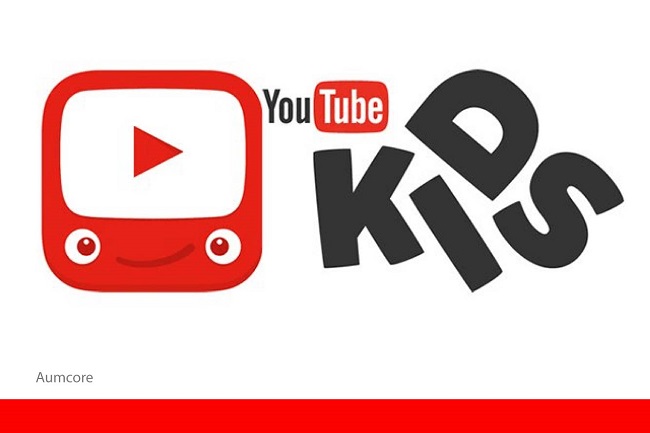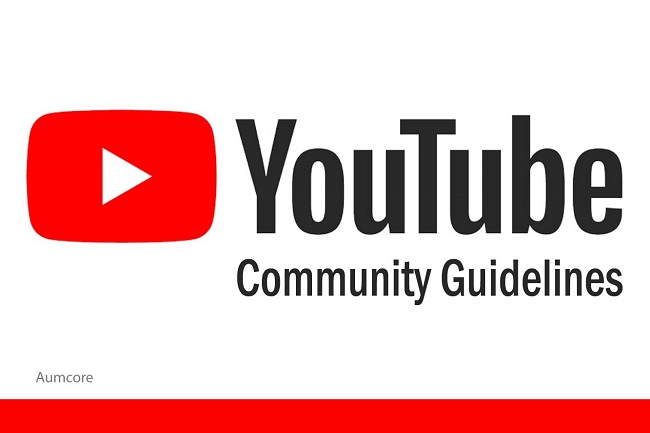When users think of social media, they think of Facebook, Instagram, Twitter, Snapchat, TikTok, and LinkedIn. Rarely, is YouTube on that list. But YouTube is, in fact, a social site. And when you throw YouTube in the mix, it’s clear that it is the most prominent social site of them all with a staggering 2 billion logged-in monthly users. The only website to exceed that number is Google!
73% of US adults use YouTube. This is higher than the 69% of American adults who are on Facebook and practically double the number of 37% of adults who are on Instagram. If these numbers weren’t enough to pack a punch, what’s more, is YouTube will make over 5.5 billion dollars from video storytelling marketing and advertising revenue in 2020. With how notable YouTube is in the digital community, it’s important for Marketers to know everything about YouTube’s community guideline updates.
Overview of YouTube Community Guidelines
If you’re not already familiar with them, you may be thinking what are the community guidelines on YouTube? The YouTube community guidelines are rules YouTube enforces so this platform remains a safe digital space for everyone. There are several different categories for the community guidelines, they are as follows:
- Nudity or sexual content
- Harmful or dangerous content
- Hateful content
- Violent or graphic content
- Harassment and cyber bullying
- Spam, misleading metadata and scams
- Threats
- Copyright
- Privacy
- Impersonation
- Child Safety
- Additional Policies
The community guidelines are designed to protect and police dangerous or malicious content, so users stay safe. Marketing videos are subject to these community guidelines as well. Many times, have brands used nudity, graphic content, and even misleading data to entice users. The community guidelines ensure all those who interact on the website abide by the same rules. It’s no secret that branded video content is more heavily scrutinized than individual user content. It’s important to take care of what is being shared on your YouTube channel. The rules surrounding these issues are, as YouTube puts it, “common-sense.” Abide by the rules and your videos should be fine.

YouTube Policy Changes
YouTube has grown tremendously since 2004 and its current 2 billion MAUs hold YouTube responsible for their safety and well being. Susan Wojcicki is the CEO of YouTube. She views responsibility in the YouTube new policy 2020 within the context of four R’s: remove content that violates YouTube policies, raise authoritative voices in searches and recommendations, reduce recommendations of borderline content that brushes against YouTube policies, and reward content that meets the higher YouTube standard for monetization.
Last year, YouTube’s community guideline updates included changes to kids content and election information. These changes came about a time where kids were subject to a dangerous viral horror challenge and a controversial political climate. For the first round of changes, the team at YouTube Kids updated the Made for Kids content to better protect children’s privacy. For your background knowledge, YouTube kids is a completely separate app that gives parents the power to curate content for their children. They can decide what content they want made available to their children, limit screen time, and see their watch history. The team also made changes to what channels are available on the app to better serve children and their parents. In addition, as of February last year, YouTube no longer allows comments under videos where children ages 13 and under appear. The social platform also decided to disable comments for videos that contain minors, which are children between the ages of 13 and 18.
Accurate information surrounding elections is crucial for voters. That’s why YouTube has created community guidelines that will remove election-related content that violates their policies. Content which has been manipulated or doctored, content that aims to mislead people, and content falsely promotes eligibility for candidates are all subject to penalization. This could be anything from suspension of activity to termination of the YouTube account. The YouTube team also removes channels that impersonate or misrepresent a government body and spam accounts which aim to increase views, likes, comments, to manipulate the YouTube algorithm. According to YouTube, less than 1% of videos watched on the platform violate the community guidelines. To further lessen this percentage, in the YouTube new policy 2019, the algorithm changed to limit borderline content and to promote content from more authoritative news and journalism sources. The result was a 70% decrease in watch time for misinformed and borderline videos.
YouTube also changed it’s monetization rules. Monetization means that creators on YouTube can earn money for the content they upload to the site. What are the new YouTube monetization rules? In 2019, YouTube added two additional requirements for content creators which are in a year’s time, the channel must have a minimum of 4,000 hours watch-time and 1,000 subscribers.

Image Source: Techcrunch.com
YouTube UI Updates, Shopping Ads, What’s Next?
Apart from YouTube’s Community guideline updates, the new user interface, which was rolled out in November, is another huge update to take note of. The new interface prioritizes videos and their titles and decreases the amount of information that is presented to users. The YouTube team wanted a cleaner design with better usability. Shopping ads were also introduced to the platform. These advertisements allow brands the ability to advertise directly in YouTube’s home feed and search results. For example, if a user searches for a review on the latest eyeshadow from Covergirl, a shopping ad will appear for suggested products above the search results.
YouTube has undergone several changes within the past year but there is still so much more in store for this social giant. A couple of the latest trends include sustainability, docuseries, follower-chosen content, and celebrity YouTube accounts. Sustainability has become a lifestyle. From thrifted clothes and furniture to the increase in reusable water bottles and straws, this trend is one that will continue to blow up in the lifestyle vlog corner of YouTube. Docuseries are another trend users can’t get enough of. One of the biggest docuseries rolled out last year with iconic makeup guru Jeffree Star and his docuseries collaboration with Shane Dawson “The Beautiful World of Jeffree Star.” The first episode alone has over 26 million views and counting. The beauty icon has over 17.5 million subscribers on his channel.
Follower-chosen content is surely going to be the contrast to canceled content. With YouTube giving users the ability to create their own queue, follower-chosen content has never been easier to curate. But will YouTube do something about #cancelculture to protect its creators from feeling the wrath of the internet? This may be the next change in YouTube’s community guidelines. The last trend we’ll see take off in the coming months is celebrity YouTube accounts. Previously, users used YouTube to launch themselves into stardom. Now, celebrities are creating YouTube content to stay relevant. Oh, how the tides have turned.
Key Takeaways
YouTube is an amazing place where you can learn new skills, get the inside scoop on creator lifestyles, or just watch a couple of dog videos. Community guideline updates are essential for marketers to know as the digital climate changes with those updates. Here are the key takeaways one more time:
- YouTube has more MAUs than any other social networking site
- Community guidelines are enforced for the safety and security of users
- YouTube no longer allows comments on videos that feature children under 13
- Comments are disabled for videos that feature minors between the ages of 13 and 18
- Election information that is doctored or manipulated will be penalized
- Penalization is based on severity and can be anything from suspended action to termination of the account
- YouTube altered its algorithm to stop the spread of borderline content and promote content from authoritative journalism and news sources
- YouTube monetization requirements changed to a minimum of 4,000 hours watch-time and 1,000 subscribers
- The homepage changed to a cleaner design with better usability
- Shopping ads are now an option for brands to promote their products and services across YouTube
- New trends across YouTube include sustainability lifestyle vlogs, docuseries, follower-chosen content, and celebrity channels
- Future updates to the community guidelines could include protections for creators against #cancelculture
If there’s an update we missed that you think is important, drop a comment below!





Tell us your thoughts in the comments